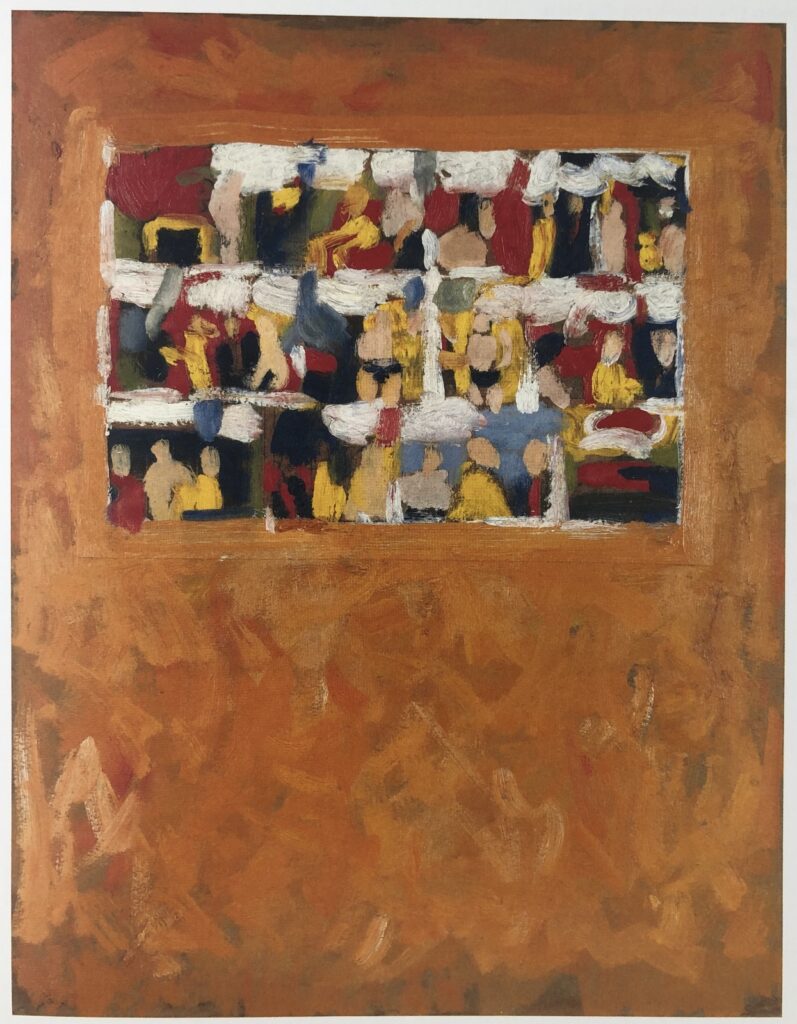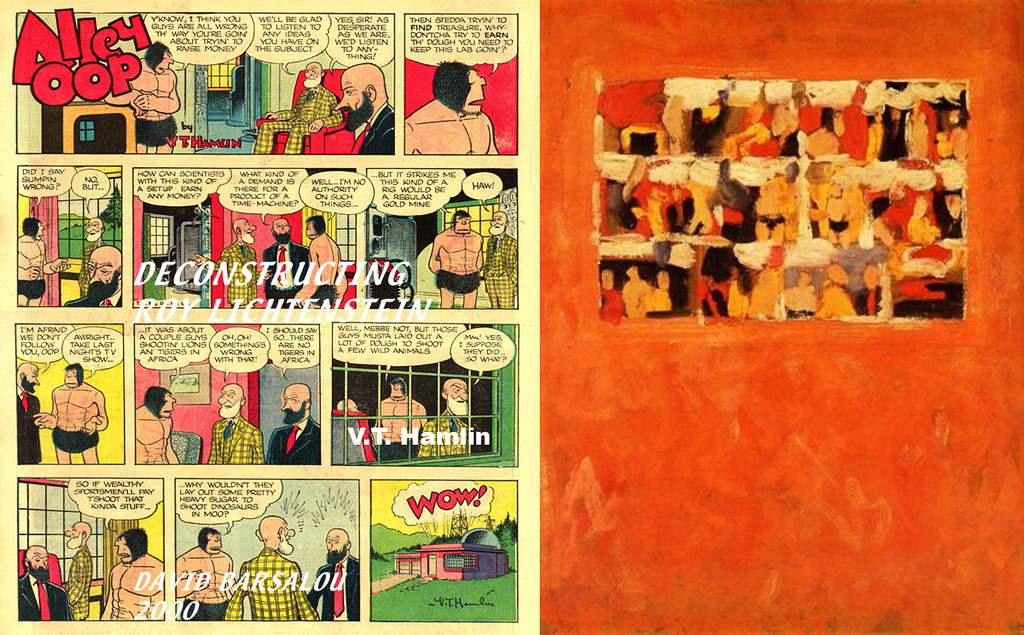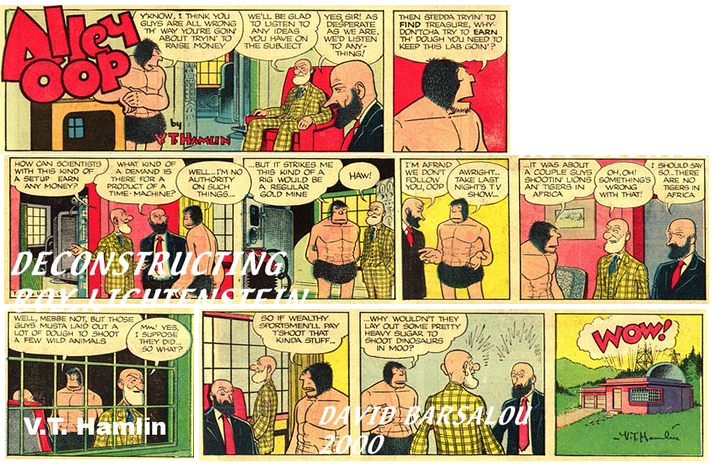
Shoutout to Brian Dupont, who yesterday flagged a recent challenge by Blake Gopnik to identify the comic strips Jasper Johns painted over in his small 1958 work, Alley Oop. Turns out one of Blake’s readers already did the same thing I just did: follow the second Google Images search result to a 20+ year-old flickr post by a guy whose self-appointed mission was to take down Roy Lichtenstein by tracking down all his comic book source images.

If the citationless flickr juxtaposition is to be believed, Johns in 1958 did not just paint over an Alley Oop comic strip; he collaged and composed it, then painted it over. [And in a format that resembles several of his flag paintings. The idea of the flag and appropriated comics being interchangeable subjects would still have been revolutionary; it’d be almost four years before Warhol and Lichtenstein would paint comic book-based images. Also, swapping out collage-y elements is a formal strategy Johns continues to use right up to the present.]
But digging a little deeper–to the wikipedia entry for Alley Oop–show’s what’s up. It turns out publishers would routinely chop or drop panel when reissuing daily & Sunday syndicated strips in comic book format. Angry Flickr Man found the right panels, but not Johns’ actual newspaper source. I rearranged them to show what the Sunday funnies page seems to have looked like.

Fortunately, Wikipedia also includes all the storylines for Alley Oop. This page, where the titular caveman suggests cash-strapped scientists fundraise by creating a time machine, then using it to charge big game hunters a fortune to hunt dinosaurs, seems to come from the beginning of “Big Game Hunting,” a story which ran on Sundays from 22 June until 19 October 1958.
So this painting was made no earlier than the Summer of 1958, after both Johns and Rauschenberg had their first exhibitions at Castelli Gallery. In 2004 Prof. Jonathan D. Katz made the connection in a paper that didn’t survive the Queer Cultural Center’s web redesign that Johns’ use of Alley Oop in a 1958 painting was a reference to Rauschenberg’s inclusion of another comic strip quoting “Alley Oop!” in two combine paintings from 1954 [Collection and Charlene, both made, Katz argues, after the two artists met]. I remember being struck by that at the time, and then I grew incredulous; does the mere presence, four years apart, of similar references really have any significance?
But then as I re-read Katz’s paper, I remember that Johns and Rauschenberg were in a self-described world of their own at that point; that Rauschenberg’s works were right there the whole time; and that they worked on each other’s works. Also, of course, both Johns and Rauschenberg were painting on newspaper clippings at the time. [See the similarly sized Rauschenberg combine from 1958, State, which includes fragments from Johns’ South Carolina hometown paper, dated from the day after his Castelli show opened.] Also, Johns gave this painting to Rauschenberg, who kept it for thirty years. [Until 1988, a year after a Johns flag painting sold at auction for $17 million, and Bob sold Alley Oop to S.I. Newhouse.] So yes, it does seem like the perfect candidate for what Katz proposed as art made for an audience of one, codified in a secret language of a couple who couldn’t express their feelings–or even acknowledge their relationship–in public.
Blake Gopnik on Alley Oop [blakegopnik.com, h/t Brian Dupont]
“Jasper Johns’ Alley Oop: On Comic Strips and Camouflage” Jonathan D. Katz, [qcc via internet archive]
